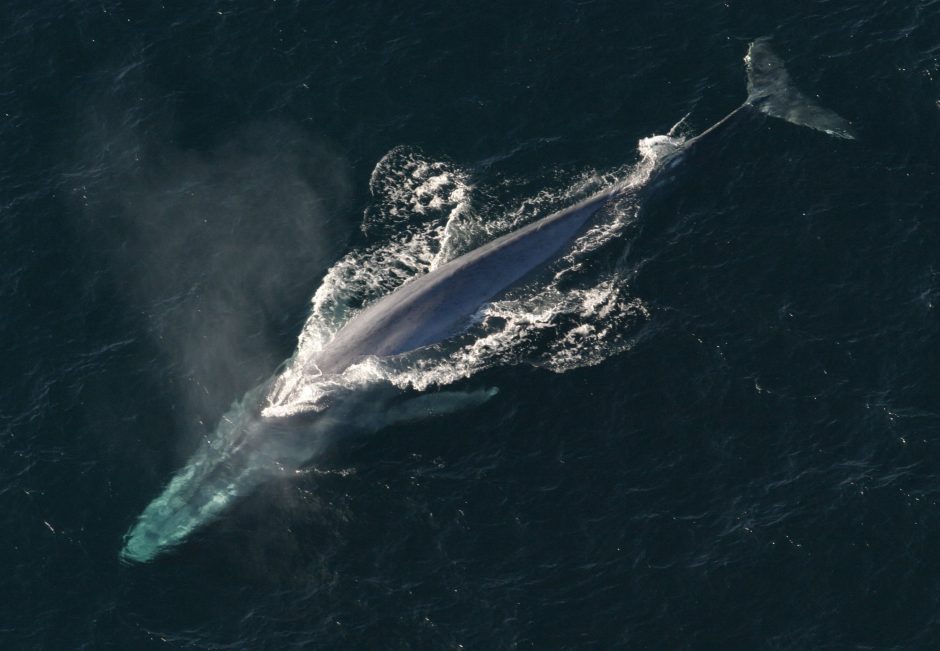The blue whale lives most of its life in solitude, until they’re ready to mate, of course. They migrate to warmer waters to a particular place closer to the equator and begin courtship, much like humans flock to clubs and flirt. The courtship behaviour of blue whales begins with male following the female around.
If another male approaches the female-male pair, all three will race with the males fighting each other to prove themselves to the female as if they were on an oceanic Fury Road. Once the female has chosen a mate, the pair rolls around each other and then swims deep into the ocean.

Blue Whale
As they are swimming upward, the male penetrates the female with his 10 foot long penis, which you don’t see because it is usually stored in his genital slit. Unlike other species, blue whales do not have one partner every breeding season; females will often have many partners every time they wish to reproduce. It sounds as if the females are doing the most they can to create offspring. So – why are they still endangered after the end of the whaling era?
It takes a lot of time and energy for a female blue whale to have a calf. Females will eat and build up stores of energy for 3 to 4 years and the gestation period is approximately 1 year on top of that. And this is all in combination with climate change negatively affecting their food supply (krill). Unfortunately, it’s going to take a while before the blue whale leaves the endangered animals list. But I will leave you with some good news: the blue whale population is increasing.
Interested in learning more about the mating behaviours of different plants, animals, and fungi? Check back here for more Mating Mondays.
For more information about tetrapods like the Blue Whale, check out the Cowan Tetrapod Collection.
